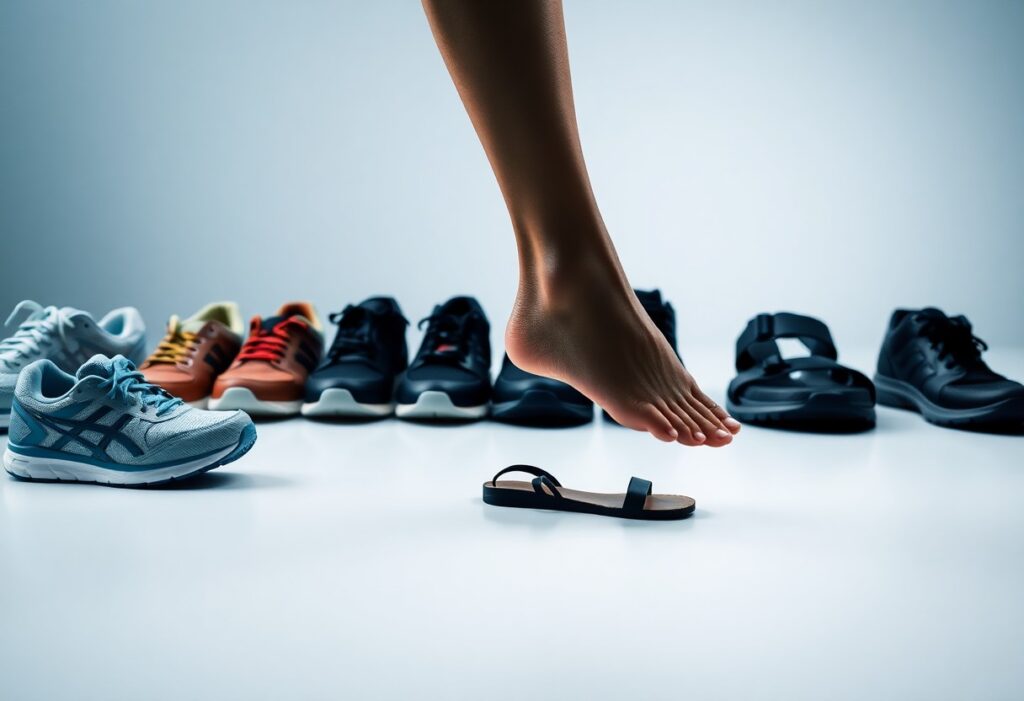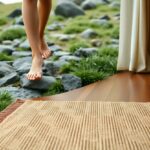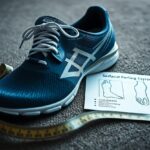
As you walk, the footwear you select can profoundly influence your foot health in both positive and negative ways. Many people mistakenly believe that shoes boasting enhanced cushioning and support are the best remedy for foot discomfort. However, traditional shoes often inflict more harm than good. Dr. Alissa Kuizinas, a podiatrist from Massachusetts, champions the use of barefoot shoes or minimalistic footwear, asserting that these options can lead to stronger, healthier feet. By opting for shoes that allow your feet to function naturally, you can significantly reduce the risk of developing various foot ailments and improve your overall foot wellness.
Recognizing the Negative Effects of Traditional Footwear on Foot Health
While traditional shoes may provide temporary relief from foot pain, they frequently exacerbate pre-existing conditions and introduce new complications, as highlighted by Dr. Alissa Kuizinas. She points out that the $133 billion shoe industry often prioritizes style and profit margins over genuine foot health, leading to designs that can constrain and weaken your feet over time. This dependence on conventional footwear creates a harmful cycle that ultimately jeopardizes your foot health and well-being.
Examining How the Shoe Industry Fails to Address Foot Health Concerns
The root of this issue lies in the shoe industry’s flawed approach to foot health, which typically focuses on adding excessive cushioning, support, and rigid construction to shoes without addressing the fundamental causes of discomfort. This misguided strategy can cultivate a reliance on footwear that may actually deteriorate your foot health over time, resulting in various complications that could have been prevented through better design choices.
Spotting the Inadequacies of Conventional Shoe Design
Many traditional shoe designs feature narrow toe boxes, rigid soles, and excessive cushioning that can impede natural foot movement, leading to weak and dysfunctional feet. Dr. Kuizinas asserts that footwear should protect your feet from external factors without restricting their natural function. An ideal shoe design should focus on natural foot mechanics and minimalist features, such as spacious toe boxes, flexible and flat soles, and minimal cushioning to promote optimal foot health.
By adopting barefoot shoes or minimalistic footwear, you can actively fortify your feet and improve your overall foot well-being. Dr. Kuizinas advocates for a philosophy of wearing as little shoe as necessary, allowing your feet to function naturally and move freely, which is essential for maintaining healthy foot mechanics and overall physical health.
Understanding the Importance of Allowing Natural Foot Movement
Footwear that restricts your foot’s natural movement can lead to a wide array of foot issues and discomfort. It is vital to assess how your choice of shoes influences your overall foot health and comfort levels, as this can greatly impact your daily activities and quality of life.
Evaluating the Impact of Shoes on Your Foot Mobility
To thoroughly understand how footwear affects your foot’s movement ability, it is crucial to analyze the specific designs and characteristics of your shoes. Traditional shoes often include cushioning and support features that can actually restrict your foot’s natural movements, leading to weak and dysfunctional feet over time. This limitation can prevent your feet from developing the necessary strength and flexibility they require for optimal functioning.
Recognizing the Benefits of Natural Foot Mobility
The benefits of allowing your feet to move freely are extensive, as strong feet are vital for overall foot health. By choosing minimalistic shoes or barefoot options, you empower your feet to operate naturally, fostering the strength and resilience essential for daily activities and athletic performance.
Natural movement is crucial for developing strong feet. When constrained by conventional footwear, you risk encountering various foot problems and discomfort. On the other hand, embracing minimalistic shoes or barefoot footwear can dramatically improve your foot health by allowing natural movement and facilitating strength-building. By choosing the appropriate footwear, you can lower your risk of developing foot issues and enhance your overall foot wellness.
Diving into the Concept of Functional Footwear for Optimal Foot Health
Understanding the principles of functional footwear is essential, as these shoes prioritize both foot health and natural movement. Functional shoes are specifically designed to allow your feet to operate as they were intended, minimizing the need for excessive support or confinement.
Defining Functional Shoes and Their Essential Features
After researching and testing various shoe styles, you will find that functional footwear possesses distinctive features, including a wide toe box, flat and flexible soles, along with minimal cushioning and support. These attributes enable your feet to move freely and naturally, fostering stronger and more capable foot mechanics.
Enhancing Foot Health Through Functional Shoes
Wearing functional shoes offers numerous advantages, such as improved foot strength, a reduced risk of injury, and enhanced overall foot health. These shoes enable your feet to operate as they were designed to, paving the way for stronger feet and better balance in your everyday activities.
Conceptually, functional footwear is crafted to support your feet without imposing unnecessary restrictions, allowing them to move and flex naturally. This design approach promotes optimal foot health and minimizes the chances of developing foot ailments. By selecting functional shoes like barefoot shoes or minimalistic options, you actively encourage healthy foot function and reduce the risk of foot pain and injury. Transitioning to functional footwear may require time and gradual adjustment, but the long-term benefits for your foot health are invaluable.
Essential Features to Look for in Functional Footwear
To achieve optimal foot health, it’s crucial to seek out shoes equipped with specific features. The key attributes to consider include:
- wide toe box
- Flat and flexible soles
- Minimal cushioning and support
Being aware of these characteristics will significantly assist you in selecting shoes that promote healthy foot function and provide necessary support.
The Importance of Wide Toe Boxes and Flexible Soles
A critical aspect of functional shoes is a wide toe box, which allows your toes to spread naturally. This design helps prevent toe jamming and other discomfort-related issues that could potentially lead to chronic foot pain, ensuring that your feet remain comfortable and healthy.
The Necessity of Minimal Cushioning and Support in Footwear
In addition to a wide toe box, functional shoes should also feature minimal cushioning and support. This design aspect allows your feet to move naturally while simultaneously strengthening foot muscles, thereby decreasing the risk of foot issues.
It’s essential to emphasize that minimalistic footwear, including barefoot shoes, can greatly benefit your foot health by enabling your feet to function freely. By choosing shoes that offer minimal cushioning and support, you can enhance muscle strength in your feet and reduce the likelihood of injuries. This strategic approach not only improves your overall foot health but also diminishes the chances of experiencing chronic pain. Therefore, prioritize shoes that allow your feet to move naturally without excessive cushioning or support.
Successfully Transitioning to Functional Footwear for Better Foot Health
Having recognized the significance of functional footwear, it’s time to embark on your transition. Contrary to the widespread belief that more cushioning and support equate to better comfort, you should opt for minimalistic shoes or barefoot shoes that support your feet’s natural functioning.
Practical Tips for a Smooth Transition to Functional Footwear
Regardless of any hesitations, start integrating functional shoes into your daily routine with these practical suggestions:
- Begin with short walks and gradually increase the distance
- Choose shoes with a wide toe box and flat soles
- Opt for minimal cushioning and support
The key is to give your feet ample time to adjust to the new footwear while building strength in the muscles of your feet.
The Importance of Patience and Gradual Adjustment During Transition
Transitioning to functional footwear demands patience and a gradual approach. Shoes that are overly minimalist can lead to discomfort and pain if your feet are not accustomed to them. Starting slowly is crucial, allowing your feet to acclimate to the new footwear style.
Footwear options like barefoot shoes or minimalistic shoes can be tremendously advantageous for your foot health, but it’s vital to introduce them gradually. Overuse or improper sizing can result in injuries or ongoing discomfort. The ultimate objective is to enhance your foot muscles while improving your overall foot health, so be patient and avoid rushing through the transition. The benefits will be substantial; expect to experience improved balance, reduced pain, and stronger feet.
Creating Strong and Functional Feet for a Healthier Lifestyle
Even in a world dominated by shoes with excessive cushioning and support, you can cultivate strong and functional feet by choosing the right footwear that allows for natural movement and strength development.
Understanding How Foot Strength Influences Overall Health
In addition to other health factors, foot strength plays a significant role in your overall well-being, affecting your balance, posture, and movement capabilities in various activities.
The Contributions of Functional Footwear to Building Strong Feet
Functionally designed shoes featuring a wide toe box, flat and flexible soles, and minimal cushioning are vital for developing strong feet, as they facilitate natural movement and function.
Indeed, wearing functional shoes or barefoot shoes can greatly assist in enhancing foot muscle strength and improving your overall foot health. By allowing your feet to move and operate naturally, you can minimize the risk of foot problems and optimize your balance and stability. As you transition to minimalistic shoes, you should anticipate improvements in your walking technique and overall sense of well-being.
By taking charge of your foot health, you can select shoes that enhance your feet’s natural functions rather than hinder them. Choosing barefoot shoes or minimalistic options that promote natural foot function will facilitate strength development over time. In doing so, you’ll enjoy increased stability and comfort during various activities, giving your feet the opportunity to become strong and functional. Start your journey by seeking out shoes with a wide toe box, flat and flexible soles, and minimal cushioning and support, while being patient as you transition to a more natural walking style.
The Article A Podiatrist’s Guide to How Shoes Affect Your Foot Health appeared first on My Shoes Finder
The Article How Shoes Impact Your Foot Health: A Podiatrist’s Insights Was Found On https://limitsofstrategy.com










Comments are closed